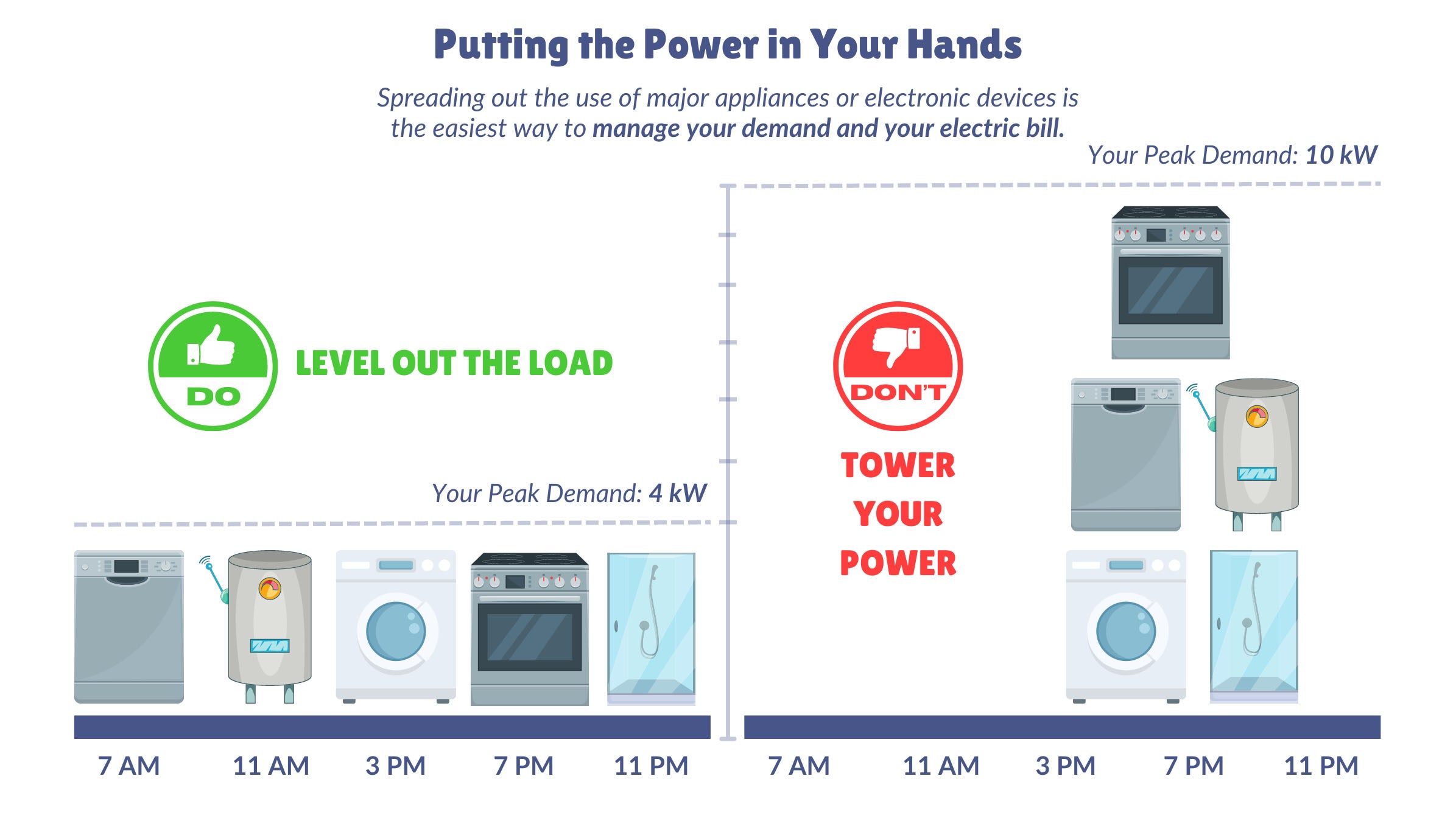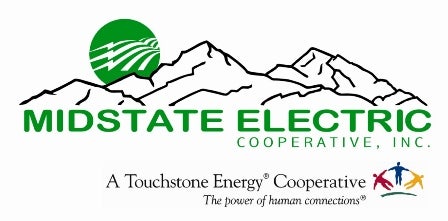In our ongoing effort to provide reliable and affordable electric service, Midstate Electric Cooperative is introducing a new demand charge of $1.25 per kW to our billing structure, which will take effect on your January 2025 billing statement. This adjustment better reflects the cost of providing power based on the peak demand placed on our system, similar to how our power supplier, Bonneville Power Administration, bills Midstate.
All accounts will be charged for demand. On accounts already charged for demand, an additional $1.25 per kW will be added to your existing demand charge. Accounts that previously received the first 25 kW or 50 kW at no charge will now be billed $1.25 per kW for these amounts. Yard and Street Light rates will also increase.
The demand charge is a fee based on the highest level of electricity demand recorded during your billing cycle. After carefully reviewing all options, Midstate’s Board of Directors made the difficult decision to implement this change. By introducing a demand charge instead of an increase to the kWh rate, the cost burden is shifted to high-demand users, rather than the entire membership. This new structure is more equitable and gives members the opportunity to manage their energy costs.
Effective January 2025, our Prompt Pay Discount will change from 1.5% to 1%. Members who pay their electric bill in full within 10 days of the billing date will receive a 1% credit applied to the following month’s electric bill.
Oregon Electric Utility Rate Comparison
Understanding three-part rates:
FACILITIES CHARGE
A fixed monthly charge that covers the costs of delivering electricity to your home or business.
ENERGY CHARGE (kWh)
The total amount of energy used during the billing cycle, measured in kilowatt-hours (kWh).
DEMAND CHARGE (kW)
NEW - This charge is based on your highest thirty-minutes of energy use during the monthly billing cycle, measured in kilowatts (kW).
Watch this video to better understand our new billing structure.
Take Control of Your Energy
Check out our step-by-step instructions on how to monitor your energy usage and demand with SmartHub, available on both desktop and mobile devices.
Use the energy demand calculator to learn about managing demand and see how stacking your appliances impacts the demand charge.
Demand Calculator
Understanding Your Bill
Explore our interactive bill breakdown to better understand each line item on your electric bill and gain clarity on your energy costs.
Frequently Asked Questions
Demand is the rate at which electricity is consumed, measured in kilowatts (kW). Members will be charged a demand fee for the highest thirty-minute period of electric consumption within their monthly billing cycle. A demand charge ensures that members contributing to peak demand pay their share of the demand costs.
To reduce your demand, consider adjusting your appliance usage to level your load and spread out the use of major appliances throughout the day, rather than running them at the same time. Using multiple appliances at the same time will increase your demand usage and the demand charge on your monthly bill.

By charging demand on residential accounts, we can ensure members with lower demand are not subsidizing those with higher demand usage. This move aligns with industry trends, as more utilities are shifting toward a three-part billing structure that includes energy usage, demand, and a facilities charge, like how we are billed by our power supplier, the Bonneville Power Administration.
MEC measures demand in 30-minute intervals. The highest demand (kW) recorded sets the member’s billed demand for that billing cycle. Demand is reset at the start of each billing cycle.
For example, if your peak demand during the month was 10 kW with the demand charge rate of $1.25 per kW, your demand charge for that month would be $12.50.
The average residential household typically generates a monthly demand charge of 9.75 kW. Under the new rate structure, this residential household would be charged $12.19 ($1.25 x 9.75 kW) for their demand usage.
MEC members are encouraged to use their SmartHub account to see when their energy use increases and consider what electric devices are in use during those times. The best way to reduce demand is by spreading out the use of those items in your home.
For example, starting the laundry and the dishwasher at the same time you start preheating the oven creates high energy use and can peak demand. Instead, run your dishwasher at night when everyone has gone to bed, cook with an air fryer instead of the oven, and don’t start your dryer at the same time you start dinner.
By spreading out your common household chores rather than multitasking, you can lower your demand and potentially save money on your energy bill.
Check out our step-by-step instructions on how to monitor your energy usage and demand with SmartHub, available on both desktop and mobile devices: SmartHub Demand Usage | Midstate Electric Cooperative, Inc
Using solar energy can reduce the energy charge, but solar is not an effective way to reduce demand. For example, solar typically generates less during the winter months, while your heating system is working the most. Solar will not offset your demand throughout the year.
You will see a demand charge on your January 2025 billing statement.
